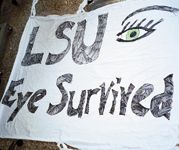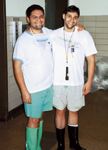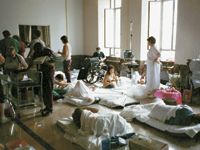Article
The storm and its Aftermath
What began as a bit of an adventure for three ophthalmology residents holed up for the weekend shift at Charity Hospital in New Orleans turned into a nightmare in the days that followed Hurricane Katrina.

They helped carry emergency-room patients to the second floor to avoid rising floodwaters, helped to assist patients when electrical ventilators failed, and endured makeshift latrines in place of nonfunctioning toilets.
They witnessed snipers firing shots at a rescue boat coming to their aid, and watched helplessly as a young man, bandaged and in a wheelchair, was given bottled water and turned away from the hospital door.

"It's an incredible dislocation that will have a long-term aftermath," said Donald R. Bergsma, MD, director of the Louisiana State University (LSU) Eye Center and chairman of the department of ophthalmology at the LSU Health Sciences Center, New Orleans.
"It was a nightmare," said Wendy Doneyhue, MD, a first-year resident. "It was the worst-case scenario."

Dr. Doneyhue left her husband, two stepsons, and their home in Slidell, LA, Saturday evening, Aug. 27, stocked with provisions for only a few days. Little did she know it would be Friday before she left the hospital-and then, it would be in a rescue boat.

"We went to bed Monday thinking that the only thing that might keep us there any prolonged length of time was waiting for other residents to get back in town to relieve us," Dr. Doneyhue recalled.
Then the levees broke.
"We started to see water where we had not before," she said. "The whole basement had flooded up to the ceiling . . . so we helped carry patients and supplies to the second floor."
Newsletter
Don’t miss out—get Ophthalmology Times updates on the latest clinical advancements and expert interviews, straight to your inbox.




